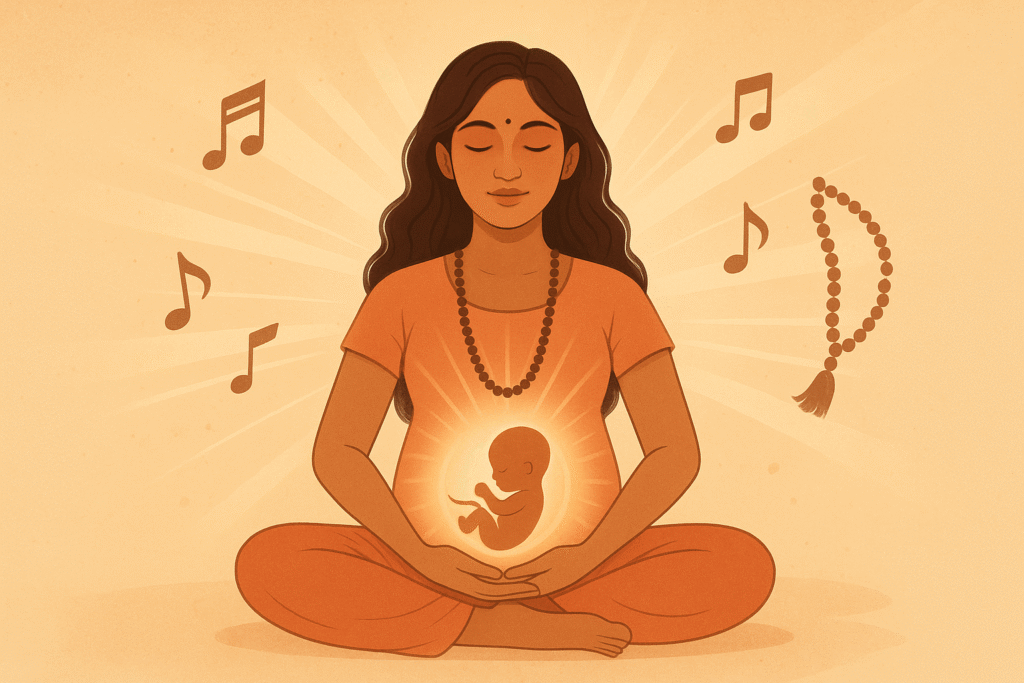
Pregnancy is not just the creation of a physical body—it is the beginning of emotional, intellectual, and spiritual development. The ancient Indian practice of Garbh Sanskar believes that what a mother sees, hears, thinks, and feels directly impacts the baby in her womb. Among the most powerful tools used in Garbh Sanskar are music, mantras, and meditation, which collectively stimulate the baby’s brain, shape their emotional resilience, and support a calm pregnancy journey.
At Janani Garbh Sanskar, we integrate these practices to help expecting mothers cultivate a deeply nourishing environment for their babies—starting from within.
Scientific Foundations Behind Sound & Fetal Development
By the 23rd week of gestation, a fetus can hear external sounds. The developing brain begins to process vibrations, and these sound signals become one of the first forms of sensory learning for the baby.
Studies reveal:
- Babies respond to repetitive rhythmic sounds, such as lullabies and mantras.
- Exposure to calming music and meditation tones reduces fetal stress.
- After birth, babies recognize melodies and voices they frequently heard in the womb.
Thus, creating a positive soundscape during pregnancy is not spiritual fluff—it is scientifically supported prenatal development.
Power of Music in the Womb
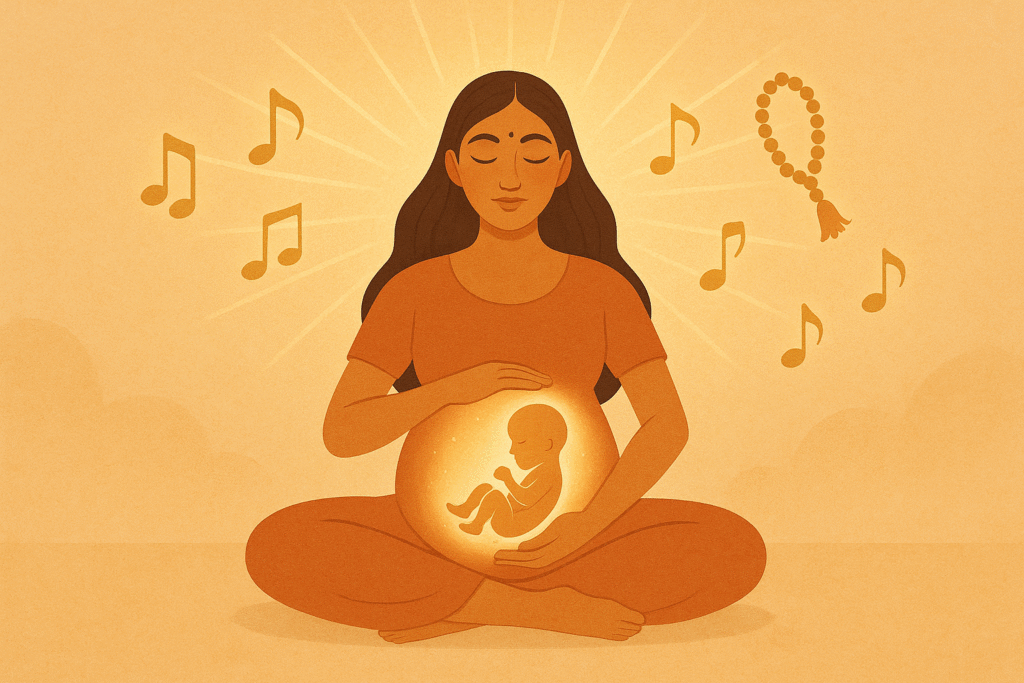
At Janani Garbh Sanskar, we use trimester-specific music therapy—tuned in Ragas such as:
- Raga Yaman: Induces peace and clarity
- Raga Malkauns: Stimulates concentration and stability
- Raga Bhairavi: Fosters emotional balance
These ragas are often paired with natural sounds like flute, birdsong, or temple bells. Mothers listen during specific times of day, usually after meals or before bed, to create consistent bonding time.
Benefits of prenatal music therapy:
- Enhances neural pathways in the baby
- Reduces maternal anxiety
- Creates a calming womb environment
- Strengthens baby-mother bonding
Learn more in our Garbh Sanskar Complete Guide
Sacred Mantras: Vibrations Beyond Words
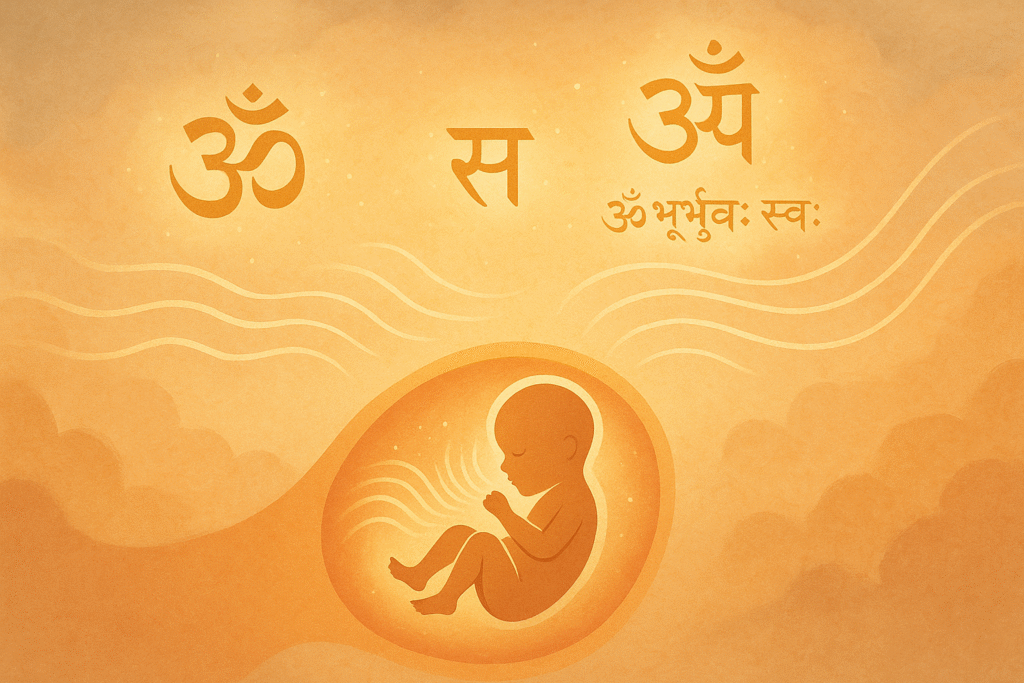
Unlike ordinary sounds, mantras are specific sound frequencies created to harmonize mind and body. Sanskrit mantras have a unique vibrational signature that resonates deeply within human cells.
Popular Mantras used in Garbh Sanskar:
- Om: Universal energy and inner peace
- Gayatri Mantra: Sharpens intellect and protects against negative energies
- Mahamrityunjaya Mantra: For health and protection
- Garbh Raksha Mantra: For womb safety and divine protection
We recommend chanting these:
- Early morning (sunrise)
- During yoga or meditation
- Before sleep
Even if not chanted aloud, listening to mantras through speakers or headphones has measurable effects on both the mother’s heart rate and the baby’s movement patterns.
The Role of Meditation in Garbh Sanskar
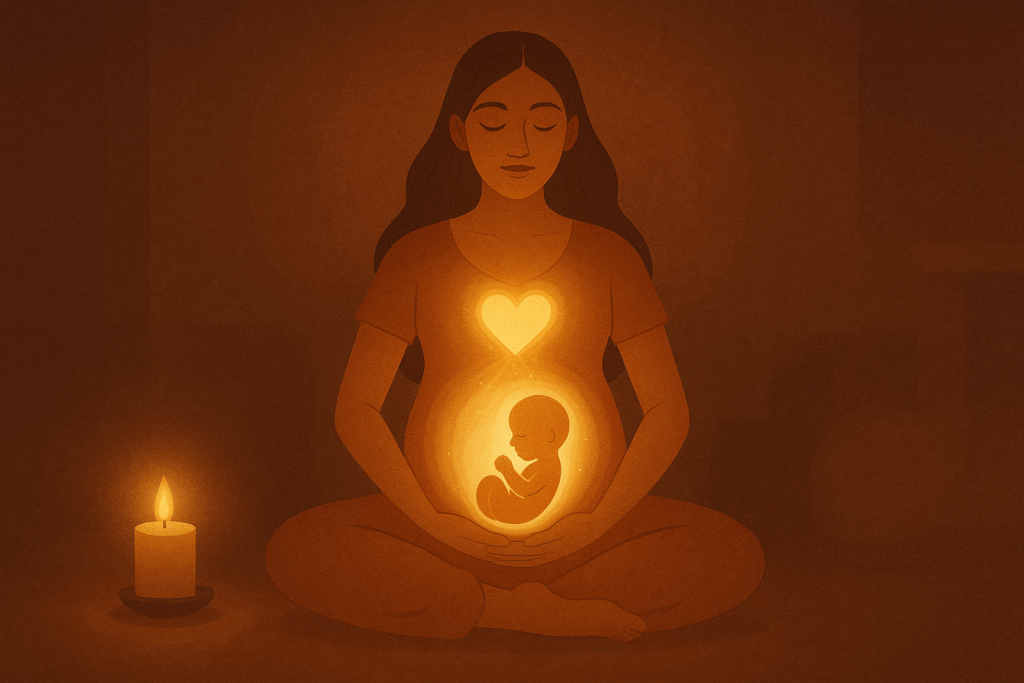
Meditation is the art of turning attention inward—of connecting with your breath, your thoughts, and your baby. It calms the nervous system, reduces cortisol (stress hormone), and enhances oxytocin (the love hormone).
At Janani Garbh Sanskar, our guided meditation sessions include:
- Womb bonding visualization
- Gratitude and affirmation-based meditation
- Breath awareness and mantra fusion practices
Even 15 minutes a day of meditation helps:
- Reduce maternal fatigue
- Improve baby’s emotional imprint
- Enhance decision-making and emotional strength in mothers
Want to learn more about trimester-specific practices? Stay tuned for our blog on Month-Wise Garbh Sanskar Guide.
Ayurvedic Backing for Sound-Based Garbh Sanskar
Ayurveda emphasizes that sound is one of the five Mahabhutas (elements). In the context of fetal development, it is the medium for:
- Shabda Indriya (Sense of hearing)
- Sattvic growth (purity of mind)
Therefore, spiritual sound input like mantras, shlokas, and healing music aligns the fetus with balanced doshas and higher consciousness.
For an overview of how Ayurveda integrates with Garbh Sanskar, check our Garbh Sanskar Complete Guide
Creating Your Garbh Sanskar Sound Routine
To practically integrate these tools, follow this weekly structure:
| Time of Day | Practice |
| Morning | Chant Om or Gayatri Mantra, followed by 10 min meditation |
| Midday | Play Raga Bhairavi softly in the background |
| Evening | Practice womb bonding visualization |
| Night | Listen to Mahamrityunjaya Mantra and do gentle breathing |
Consistency is key. Even if you’re new to meditation or mantras, start small. The baby only needs your intention and presence.
Real Stories from Janani Garbh Sanskar
We’ve guided over 50000+ expecting mothers through this spiritual sound journey. Many report:
- Babies who sleep better and cry less
- Shorter labor times
- Improved postpartum recovery
- Early verbal development in children
In Solapur, we’ve collaborated with Lokmat print media, Bhaskar group ,rural hospitals, and conducted 50+ free camps to spread this transformative method even to underserved communities.
Explore our workshops here: https://workshop.jananigarbhsanskar.com
Frequently Asked Questions (FAQ)
Q: Can I use Spotify or YouTube for listening to mantras?
Yes, as long as you choose authentic, clear chants and limit volume to avoid over-stimulation.
Q: How early should I start?
Ideally from the 2nd trimester (week 13 onward), but even starting in the 3rd trimester brings benefits.
Q: What if I don’t understand Sanskrit?
Understanding is secondary; the vibrations carry the primary effect. Regular listening creates resonance.
Conclusion
In the sacred journey of motherhood, music, mantras, and meditation are your spiritual companions. They not only bring peace and clarity to the mother but also carve a path for the unborn child’s emotional intelligence and spiritual harmony.
At Janani Garbh Sanskar, we offer guided sessions, music-based modules, and personalized mantra plans to make this path simple and impactful.
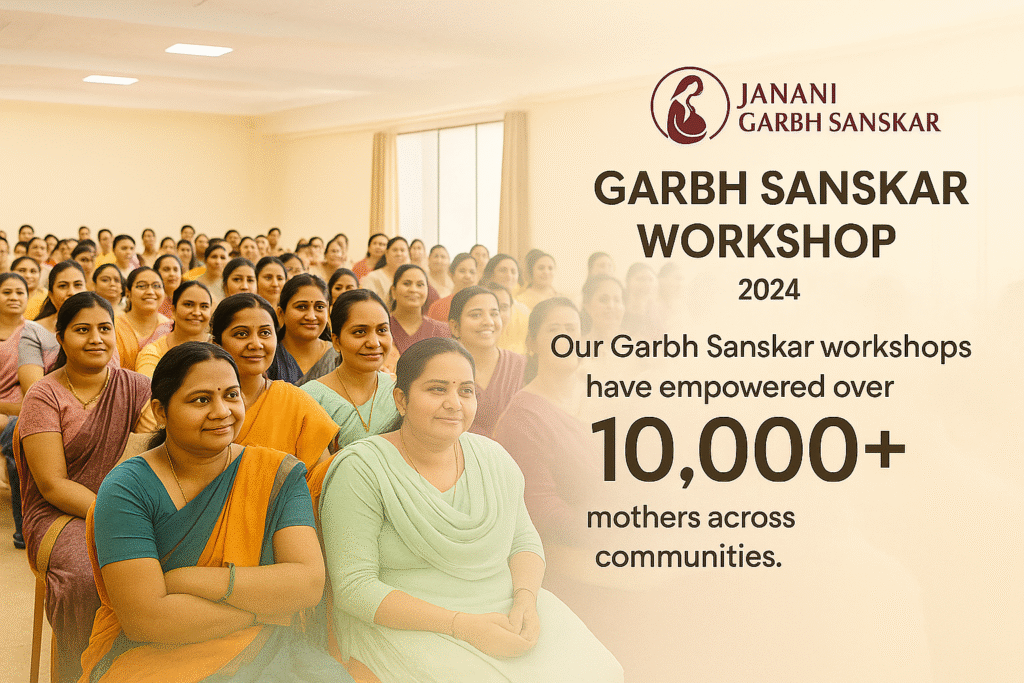
Ready to bond with your baby at the soul level?
🌸 Explore Our Workshops →